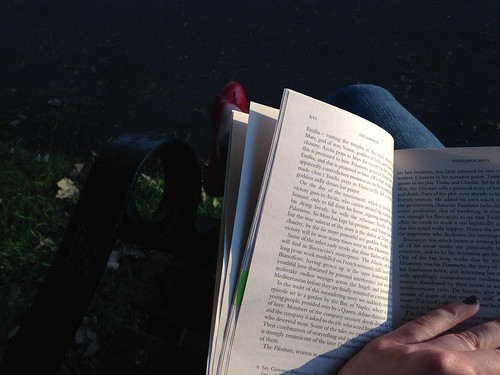Summer means travel and this year I enjoyed four weeks of it. And four weeks on the road demands juicy reads. I soared through love triangles and depleted inheritances and dysfunctional families. But now I must atone for devouring novels so entertaining that a slower pace would misrepresent them. I read books irrespective of their cultural capital.
Reading this way should feel liberating. Yet society convinces us that a book’s value is proportional to the amount of effort it takes to finish. Better to push yourself through The Castle than to frolic with The Year of Living Danishly. We should laugh at this. It’s the reading process that’s important. Whereas cinema seduces you with perfectly-pressed pictures, books require you to assimilate another outlook that generates as a hybrid experience between book/reader and author/reader.
Just as some people prefer thrillers to comedies, everyone has a favorite narration-style. For me, The Castle was thought-provoking but not a page turner, while The Year of Living Danishly lured me out of museum galleries and into the toilet where I’d sneak-read a chapter when ohh-ing and ahh-ing at Picasso grew tiresome. Although name-dropping Kafka at a dinner party might exhibit my cultural capital (as could the Picassos I spurned), I’d sooner mention Jutland’s Lego-themed hotel, which I learned about in The Year of Living Danishly. The former seemed the intellectual equivalent of an undressed kale salad, while the latter was indulgent like a Saturday morning croissant. My preferred narrative style is casual, modern and anecdotal.
If I were to focus on just that genre, I’d still suffer from too-many books too-little time syndrome. Avid readers understand this affliction. You realize its severity when you return home from your favorite bookstore and struggle to balance a third layer of books on your deepest shelf. Digital society exacerbates this affliction. Now we can crowdsource recommendations from friends, get personalized selections from Good Reads and download them all with a single click on Amazon. Whereas money, space and time previously constrained the of books we encountered, the rise of e-readers and low-priced e-books renders the first two constraints irrelevant.
We need new parameters to decide what to read. Publishing might bring a book to stores, but it doesn’t keep the book in print. Time sets a story apart.
But time doesn’t signify longevity; it means any book that people have collectively decided to devote time to. Whether that means the weeks it takes to meander through The Goldfinch, the years Potter-heads devoted to waiting for J.K. Rowling’s next installment or the decades War and Peace has sat (unread) on your bookshelf, time determines social value in myriad ways. The greater a book’s power to mobilize communal time, the greater its cultural visibility. It means that the title be name-dropped and understood. Unfortunately, this turns books into weapons of self-presentation in the crusade of conspicuous consumption. We use the covers and quotes, the licensed products and spinoffs, to exhibit our understanding of the story’s social value. When space and money no longer restrict access to books, a story's ability to mobilize time in myriad ways that determines its cultural value.
Mass-commodification touches every book. Oprah includes a translation of Anna Karenina in her reading club. Dante’s Inferno has become a computer game. Baz Luhrman forced us to share an image of The Great Gatsby’s great green light. Although some might argue that classic literature offers an escape from the commercialization of reading, social trends reveal that a story rich in time is apt for commodification.
I’m at an impasse. During August I committed myself to reading only novels that bring me unwarranted pleasure. Will September’s fresh pencil smell encourage a return to Kafka, Calvino and Kant? To books that allow me to feign separation from the industrial publishing machine? Maybe. Or maybe I need a new balance. One that lets me read books that are engaging and light and thoughtful and consoling. Not every book communicates every emotion, but the best mix them into unexpected cocktails that change your perspective on what reading and feeling mean. The ones that have mobilized the most time and money are the ones to which we surrender shelf space. But just like some people prefer gin-based cocktails while others opt for bourbon, different readers seek different consolations and outlooks. These can vary within a reader’s life. Somedays you crave a challenge, other days you long for a chuckle. Library card in my hand, I can’t wait to see what I have time for next.
